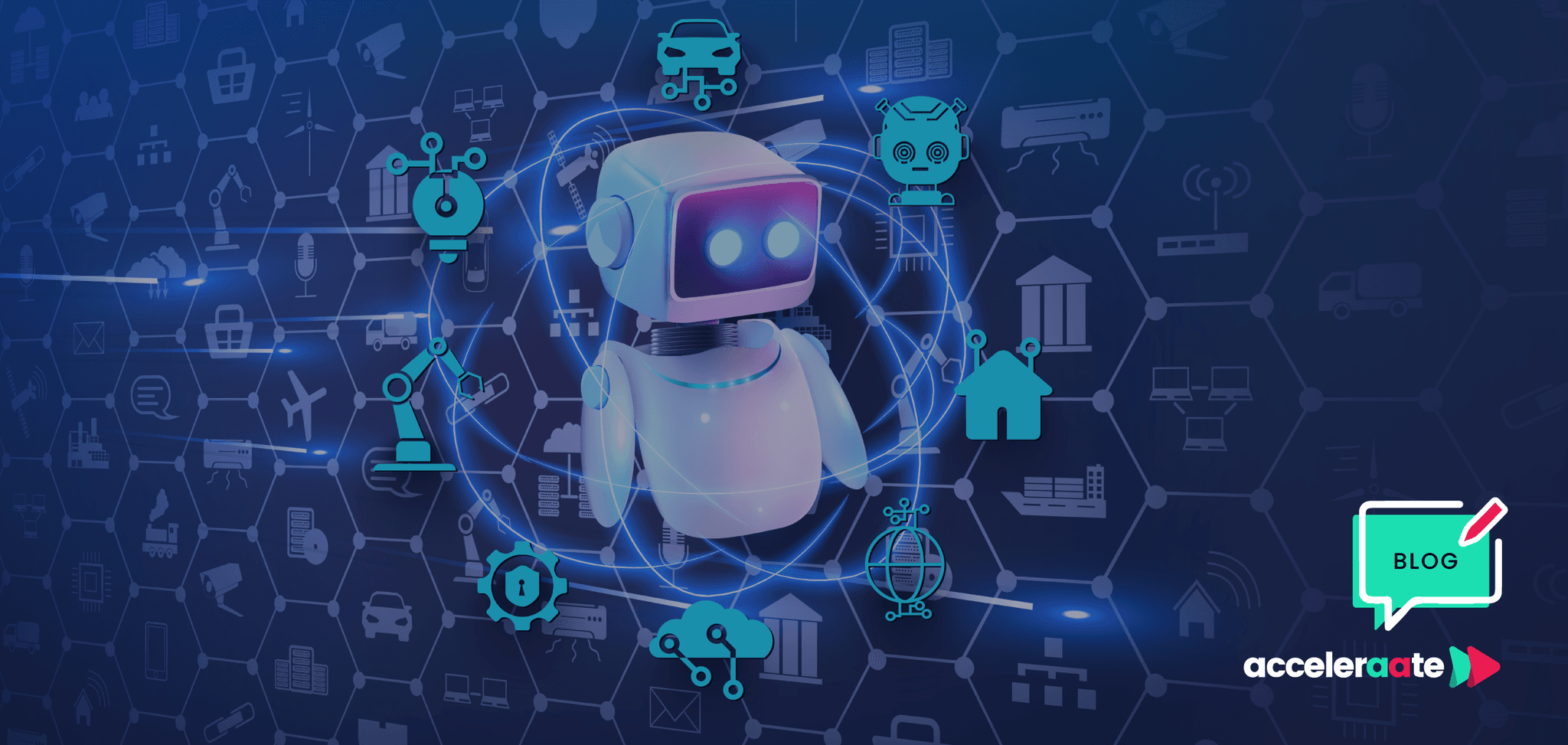
It’s no secret that AI has steadily re-shaped customer experience over recent decades. In the 1990s, the first automated call-routing systems and Interactive Voice Response (IVR) technology brought basic automation to contact centres, helping direct callers and reduce volumes. By the 2000s, simple chatbots and virtual assistants emerged, and as machine learning advanced, AI began offering deeper insights and more natural interactions.
In the 2010s, breakthroughs in deep learning unlocked new possibilities, from analysing customer sentiment to providing personalised, proactive support. Today, AI drives omnichannel support, intelligent routing, and enhanced self-service across industries. And now in 2024, the latest concept/ buzzword/ marketing term (*delete as appropriate) - Agentic AI – claims to push the boundaries even further.
But what is Agentic AI? Is it new? How can it elevate customer experience? Let's explore its impact and potential.
What is Agentic AI?
Agentic AI goes beyond "traditional" automation by being more autonomous and capable of decision-making, delivering more personalised, efficient, and dynamic customer interactions. This level of AI can adapt on the fly, enabling contact centres to deliver seamless, intelligent, and highly personalised support.
How is it different to Generative AI?
Agentic AI and Generative AI are both transformative but serve distinct roles. Agentic AI focuses on performing actions, making decisions, and autonomously completing tasks based on pre-set goals and real-time data. It’s designed to operate with a certain level of independence, meaning it can assess situations and execute actions to achieve specific outcomes without constant human guidance. For example, in a customer service setting, an agentic AI could monitor interactions, recognise when a customer is dissatisfied, and automatically escalate the issue to a supervisor, or even offer a refund - all without human intervention. Its purpose is to act on behalf of users and businesses, making processes smoother and more responsive to real-world situations.
By contrast, Generative AI is built to create, rather than act. Using advanced machine learning models, generative AI can produce text, images, or other forms of content based on a given prompt. It’s widely known for applications like content creation, design, and language modelling, where the goal is to generate new, coherent content that aligns with user input. For example, a generative AI might assist a customer service team by drafting responses, creating FAQ articles, or even designing personalised marketing emails. While it provides valuable assets for communication and engagement, it doesn’t have the autonomy or decision-making capability that characterises Agentic AI.
TL, DR: Agentic AI takes action to complete goals autonomously, while Generative AI creates content to support human-driven initiatives. Together, they complement each other by combining autonomous action with creative, dynamic content generation.
Am I already using Agentic AI?
Quite possibly. Whilst the word itself is relatively new, the capabilities it refers to are already leveraged by multiple organisations (maybe even your own), at various stages of maturity. For example, if you’re using a modern AI solution like Zoom Virtual Agent – it is specifically designed to provide 24/7 self-service support, and can handle a variety of customer queries, automate tasks, and deliver personalised responses based on natural language intent recognition. That’s an example of Agentic AI.
Here are more examples of where Agentic AI can be used to drive higher quality, and more efficient customer experiences across a variety of industries:
Proactive Issue Resolution
AI can predict and address potential issues before they escalate into major problems. By monitoring customer data and identifying patterns, AI can trigger proactive interventions, such as sending alerts or providing solutions before customers even realise there is an issue.
Example: An internet service provider uses AI to monitor network performance and detect potential disruptions. If the AI predicts a service outage, it automatically informs affected customers and suggests troubleshooting steps, minimising the impact on the customer experience.
Impact: Reduced contact volumes, increased customer satisfaction through proactive communication, and enhanced brand loyalty.
Sentiment Analysis and Emotional Intelligence
AI can gauge customer sentiment and emotions during interactions, allowing agents to respond more empathetically and appropriately. This emotional intelligence enhances the overall customer experience and helps build stronger customer relationships.
Example: An insurance company could leverage Zoom Contact Centre and Zoom AI Companion to analyse the tone and sentiment of customer interactions. If the AI detects frustration or dissatisfaction, it alerts supervisors to intervene and provide additional support, ensuring that customers feel heard and valued.
Impact: Quicker conflict resolution, enhanced customer satisfaction, and reduced escalations.
Automated Quality Assurance
AI can automate the quality assurance process by monitoring and analysing customer-agent interactions. It can evaluate the performance of agents, provide feedback, and identify areas for improvement, ensuring that the quality of customer service remains high.
Example: A contact centre QA team implements Zoom Quality Management to automatically review calls and transcripts. The AI assesses agent performance based on predefined criteria, such as adherence to scripts and customer satisfaction scores, providing actionable insights to enhance training programs, and offering the ability to manage none-compliant interactions by exception.
Impact: Increased compliance, reduced risk, and significant cost savings by automating QA.
Enhanced Self-Service Options
AI-driven self-service channels empower customers to find answers and resolve issues independently. These channels utilise natural language processing (NLP) to understand customer queries and provide relevant information from knowledge bases or FAQs.
Example: A financial services company might offer an AI-powered self-service platform where customers can check account balances, transfer funds, and get answers to common questions. The AI continuously learns from customer interactions to improve the accuracy and relevance of its responses.
Impact: Increased operational efficiency, reduced wait times, and improved customer experience for routine enquiries.
Handling Multimodal Conversations Across Channels
Agentic AI can now handle multimodal support, where it shifts seamlessly across channels (like phone, chat, email, and social media) in a single conversation.
Example: A retail company might offer an AI that helps a customer who begins an enquiry on chat, then switches to a phone call, and finally needs follow-up through email. The AI retains the conversation history and context, making it appear as one continuous interaction, regardless of contact channel.
Impact: Enhanced customer experience through seamless multichannel support, reduced friction, and higher resolution rates.
Autonomous Agent Training and Performance Improvement
Agentic AI can also function as a virtual coach for customer service agents. It can monitor interactions, provide feedback in real-time, and even suggest alternative responses and content for difficult questions.
Example: In a tech support environment, an AI-driven coaching tool could observe an agent struggling to assist a customer and offer scripted responses, troubleshooting steps, or escalate the issue if needed. Over time, this helps agents become more efficient and effective.
Impact: Enhanced agent performance, continuous skill development, and reduced onboarding times for new agents.
Dynamic Personalisation in Customer Interactions
Agentic AI can analyse vast amounts of customer data to deliver personalised experiences. By understanding individual preferences, purchase history, and behaviour patterns, AI can tailor recommendations and solutions to each customer's unique needs. This level of personalisation enhances customer satisfaction and loyalty.
Example: An AI assistant in an online retail setting can not only suggest products based on a user’s preferences but also consider real-time context. If a customer has an upcoming anniversary, the AI could suggest personalised gift options with expedited delivery options and a gift-wrapping service.
Impact: Increased upselling and cross-selling opportunities, a highly personalised customer experience, and improved conversion rates.
Efficient Call Routing
Agentic AI can optimise call routing by analysing the nature of incoming calls and directing them to the most appropriate agent or department. This ensures that customers are connected with the right person to resolve their issues efficiently.
Example: A healthcare provider uses AI to route calls based on the patient's symptoms and medical history. This intelligent routing reduces wait times and ensures that patients receive specialised assistance from the most qualified healthcare professionals.
Impact: Better experience through reduced queuing and transferring, utilising the right advisors for the right work, improved efficiency.
Final Thoughts.
Agentic AI has been ushering in a new era for contact centres and customer service, providing proactive engagement, real-time sentiment analysis, cross-channel continuity, and dynamic personalisation. As more companies adopt Agentic AI, we can expect customer service to evolve from reactive to proactive, making service interactions seamless and much more tailored.
Zoom Virtual Agent and Zoom Contact Centre exemplify the power of Agentic AI to transform customer service by enhancing self-service capabilities, personalising interactions, enabling proactive support, and unifying communication across multiple channels. These solutions showcase how AI-driven customer support can go beyond traditional limitations, setting a new standard for customer experience in the digital age.
So, what do you think? Are you already using Agentic AI but didn’t realise there was a name for it? Let us know in the comments!
And why not tell us how you're using Agentic AI in your organisation. We'll be happy to name-check and link you in a future article!
About Acceleraate
Acceleraate is a Zoom Solution Partner, Zoom Authorised Reseller, and the first Zoom partner to achieve the Zoom Customer Experience (ZCX) Competency certification. We are CX and Customer Contact optimisation experts and specialise in solving problems by uniting cloud technology with smart and straightforward thinking. We focus on helping businesses reduce effort, improve loyalty, and maximise cost efficiency.
With over two decades of hands-on experience designing, implementing, and managing cloud contact centres and AI solutions for some of the UK's best-known businesses and brands, Acceleraate delivers CX strategy, implementation, system integration, optimisation, and modern managed services for business.
Get started with a call.
About the author

Part of Founded Group Limited








